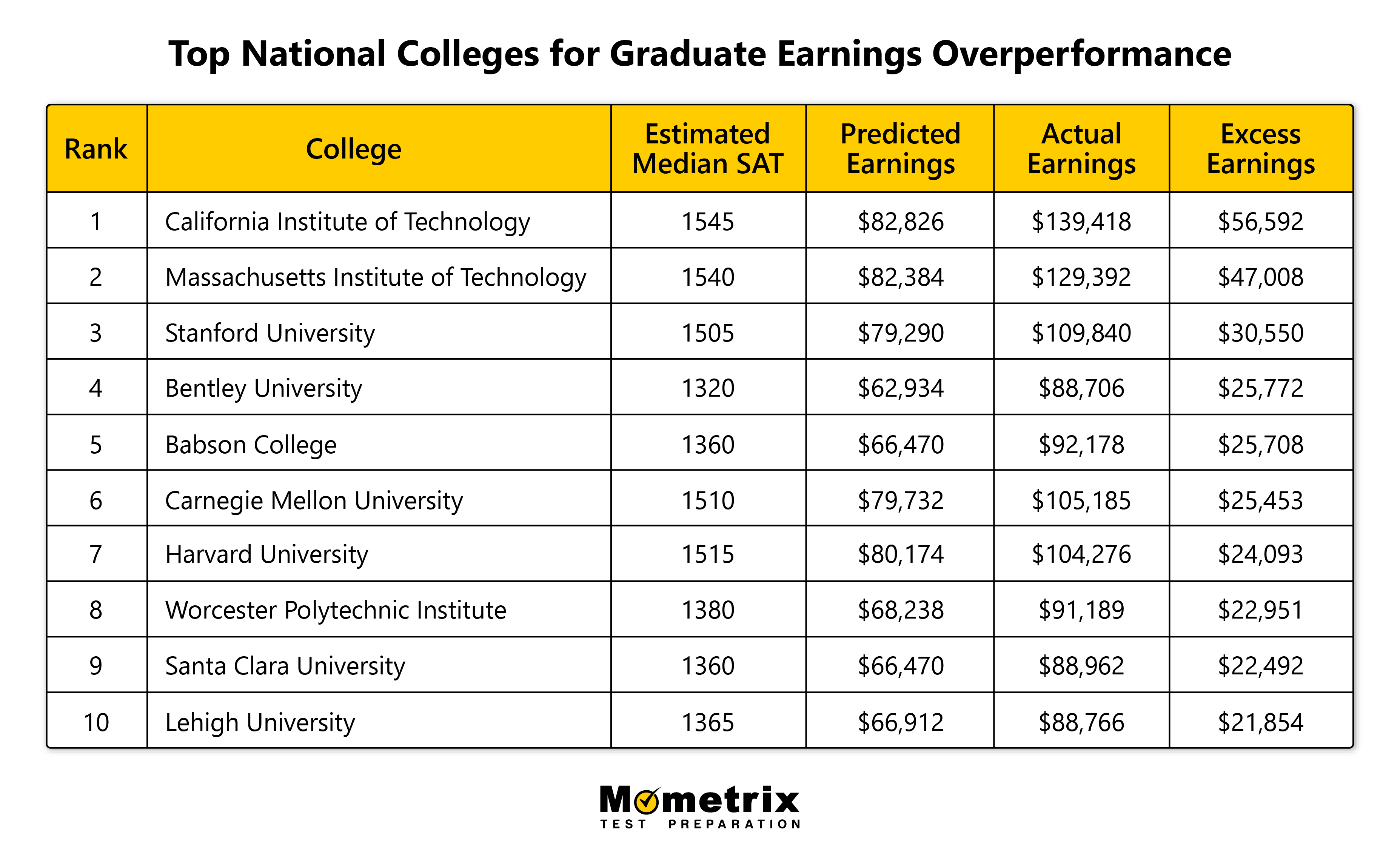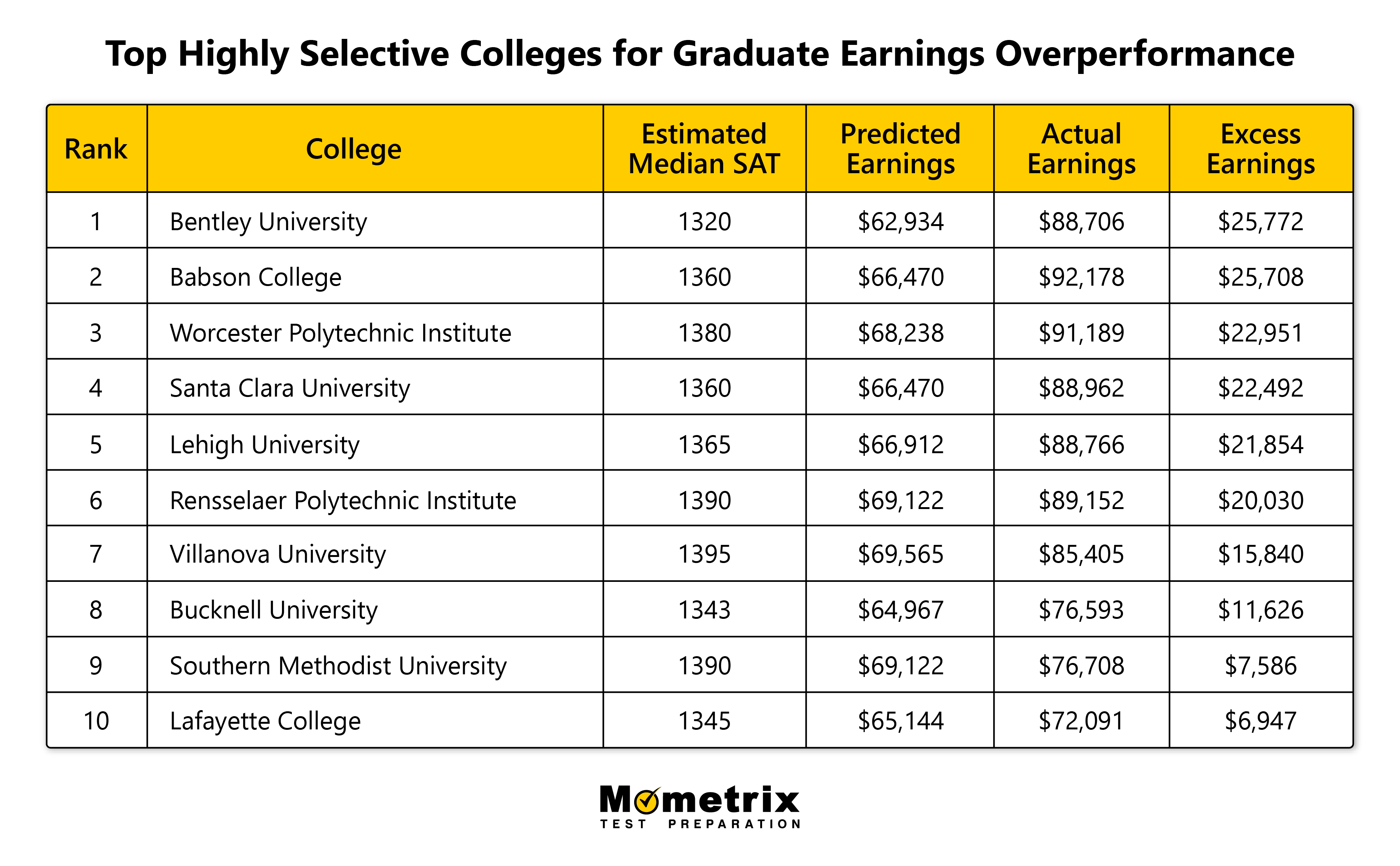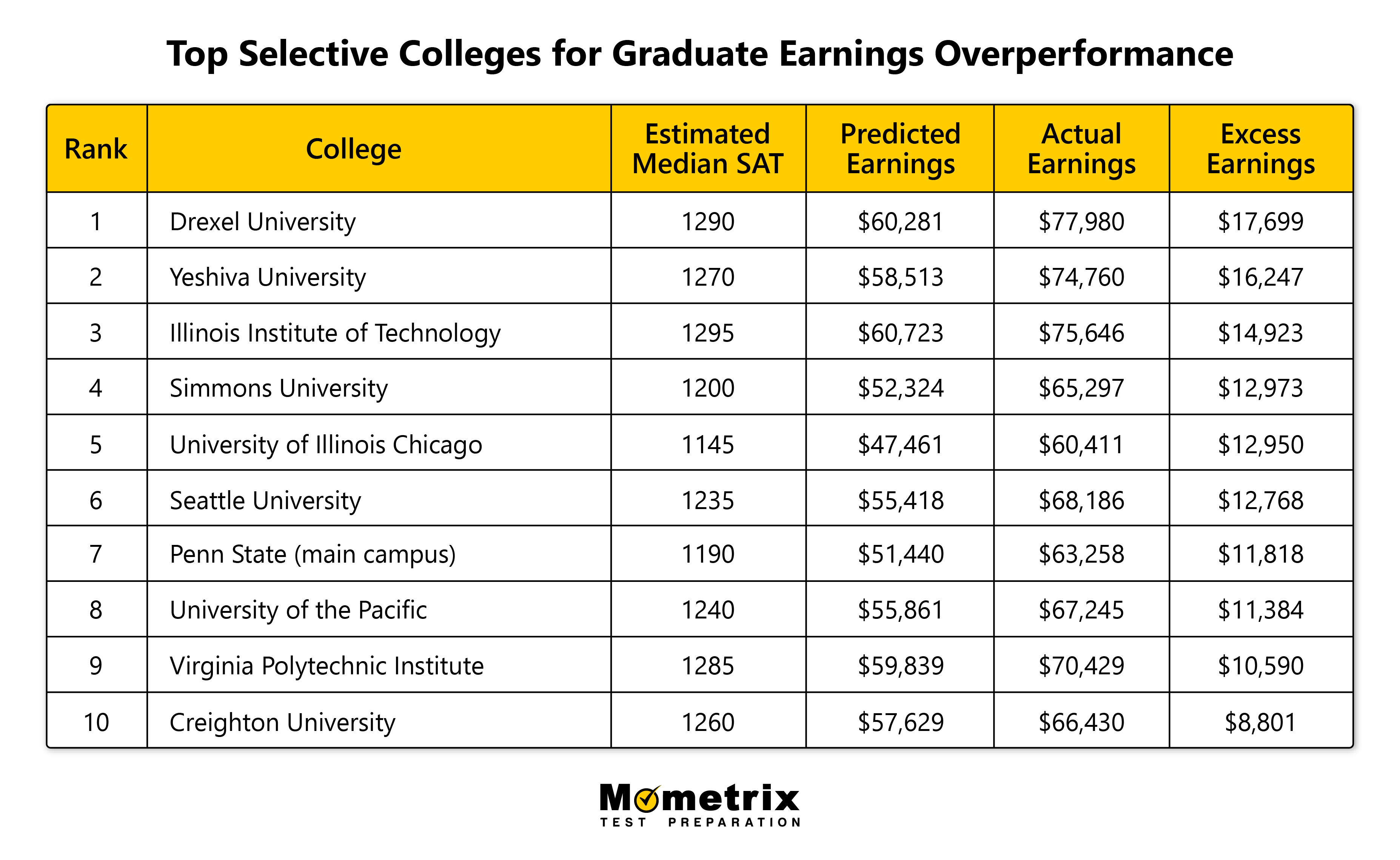What if we told you a higher SAT score predicts you making a higher salary later in life? And what if we gave you the inside info on which colleges do the best job of turning smarts into money? That’s the point of today’s post, where we answer the question: What’s Your SAT Score Worth?
To answer the question, we pulled data from the US Department of Education’s College Scorecard data. In exchange for accepting federal financial aid, colleges are required to submit detailed data on their student body, and the government collects earnings data from those who received financial aid.
The result: we can see the midpoint SAT of students entering a college, and then the median earnings of their employed graduates four years after they graduate. Linking the two together, we can answer two interesting questions.
On average, how much does an undergraduate’s SAT score impact their future earnings? And also, which colleges and universities do the best job of maximizing their students’ earnings relative to their baseline academic performance as freshmen?
Key SAT Test Statistics
We sampled roughly the top 100 ranked colleges and universities, and linked up median SAT scores and earnings by college to make a graph showing the relationship:
Here’s what you need to know about the data:
1. Every additional 100 points of median SAT score among students at a college predicts $8,840 in additional annual earnings for their graduates.
So, a college with a median SAT score of 1300 would expect its graduates to earn $8,840 more per year than a college with a median score of 1200. Remember, this is an association, not necessarily causation.
2. As you can see from the visualization, there’s a lot of variability at the same median SAT.
Statisticians use a measure called correlation to quantify the relationship between two things. A correlation of 1 indicates a very strong relationship, whereas 0 indicates no relationship. For example, a correlation of 1 would mean that higher SAT scores always lead to higher earnings, and a correlation of 0 would mean there’s no connection at all.
In this case, the correlation between SAT scores and earnings is about 0.48.
This indicates that the median SAT scores of a school’s graduates explain only about 24% of the differences in earnings.
3. Some colleges do a much better job at helping students reach their earning potential than others, relative to SAT scores.
Who are these outliers? That’s the focus of our next section.
The Colleges That Best Convert SAT Points Into Dollars
One way of looking at this data is to see SAT scores as student potential. It’s up to the universities and students themselves to mold that potential through education, opportunities, and individual development. High SAT scores are an advantage but not a guarantee of success.
The question then is which colleges do the best job at helping students convert their SAT smarts to earnings later in life?
If you get a high score, who will help you make the most of it?
We can answer this question by comparing our model’s prediction of earnings by median college SAT to the actual median earnings of students. We did just that, crunched the numbers. Here are the top ten colleges that most exceed our statistical model, and by how much:
We noticed a few patterns in this list, notably the overrepresentation of STEM-focused elite schools. Two small entrepreneurship-focused business colleges, Babson and Bentley, punch way above their weight compared to the Ivy League, whose sole member of this elite group is Harvard.
But what about somewhat less elite colleges?
We could call this list “Top Highly Selective Colleges for Earnings Graduate Overperformance.” Among those with a median SAT between 1300 and 1400, here are our best overperformers:
And what about more achievable schools for most students?
We did limit our research to around the top 100 universities, so our sample has a minimum median SAT of around 1150. We’ll call this list our “Top Selective Colleges for Graduate Earnings Overperformance.”
Here’s how our top schools with a median SAT below 1300 rank relative to predicted earnings:
As you can see, both SAT scores and careful college selection can have an independent effect on optimizing the earnings of graduates. Students would do well to study this data in more detail to get the best educational value from their own raw capabilities.
Certain colleges, particularly those focused on STEM fields and entrepreneurship, seem to do an exceptional job at helping students convert their raw potential, as measured by SAT scores, into higher earnings later in life.
When looking at the data, it’s important to remember that correlation does not equal causation. Regardless, for students looking to maximize the return on their college investment, carefully considering both their own SAT scores and the track record of the colleges they are considering is a valuable exercise.
Study Technical Notes and Limitations
To compile our statistics, we compared estimated median SAT scores from around 140 of the nationally top-ranked colleges and universities. Estimated median SAT scores were calculated as either the sum of the midpoint math and verbal scores for the admitted freshmen, or else an average of institutions’ most recent self-reporting of 75th and 25th percentile scores to either the Department of Education or US News or other popular aggregators of such statistics, respectively. Graduate median earnings four years after graduation were also compiled from the Department of Education’s College Scorecard reports. A potential limitation of this study is that the earnings data is derived from those graduates who received some sort of financial aid, not a complete sample of graduates. However, to the extent it shows the earning differentials of the least privileged students who attend selective colleges, these students arguably benefit less from other sources of privilege in their post-undergraduate careers due to personal or family networking; in other words, the earnings of students receiving financial aid seem more likely to reflect the true “value add” of a university than those who pay sticker price.



